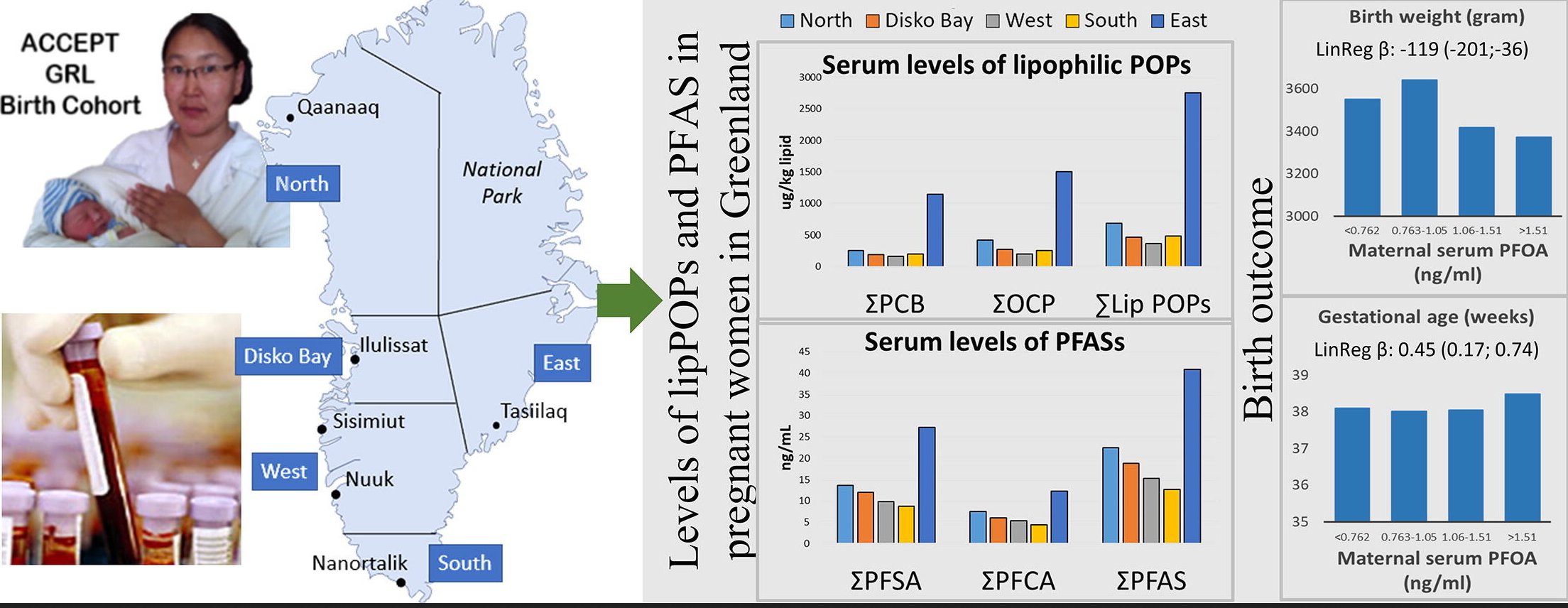Persistent organic pollutants in Greenlandic pregnant women and indices of foetal growth - The ACCEPT study
New publication by Hjermitslev, Marie Harthøj; Long, Manhai; Wielsøe, Maria; Bonefeld-Jørgensen, Eva C

Abstract:
The Greenlandic population has some of the highest levels of environmental persistent organic pollutants (POPs) globally. Studies have previously found POPs to be linked with disturbance of child development, immune function and reproductive abilities. We investigated the associations between serum POP levels of pregnant women in Greenland and their infant's birth weight, length, head circumference and gestational age (GA) at birth.
Pregnant Greenlandic women (n = 504) were enrolled during pregnancy and serum levels of the lipophilic POPs (Organochlorine pesticides, Polychlorinated biphenyls and Polybrominated diphenyl ethers) and the amphiphilic POPs, Perfluoroalkylated substances (PFASs), were measured. We analysed the associations between maternal serum levels of POPs and birth weight, length, head circumference and GA using linear regression analysis.
We found significant inverse associations between Perfluorooctanoic Acid (PFOA) and birth weight (adjusted β = −119 g, 95% CI: −201; −36), birth length (adjusted β = −0.37 cm, 95% CI: −0.76; 0.02, borderline significant) and head circumference (adjusted β = −0.35 cm, 95% CI: −0.59; −0.10) and a positive association with GA (adjusted β = 0.45 week, 95% CI: 0.17; 0.74). For the lipophilic POPs, we found an overall trend of inverse associations to foetal growth indices.
In conclusion, we found that the amphiphilic PFOA had a significant inversely association with foetal growth indices, whereas GA was positively associated. The data indicate that POPs have a negative effect on foetal growth.
